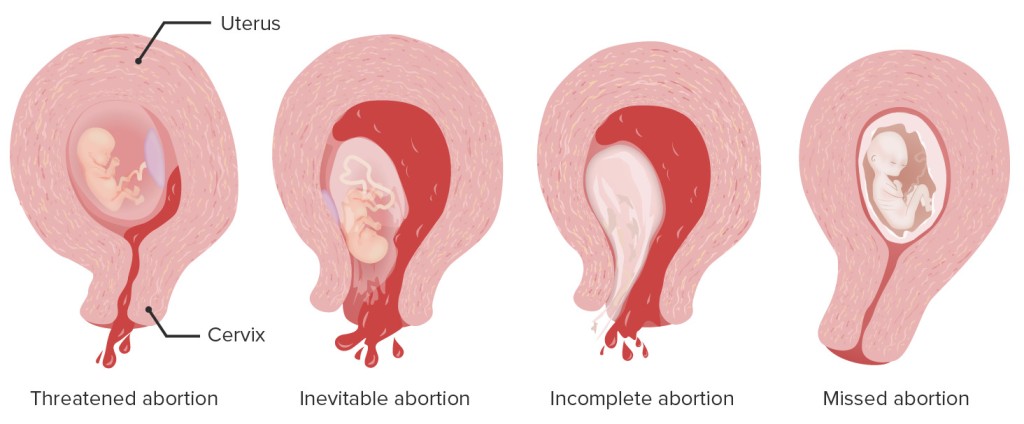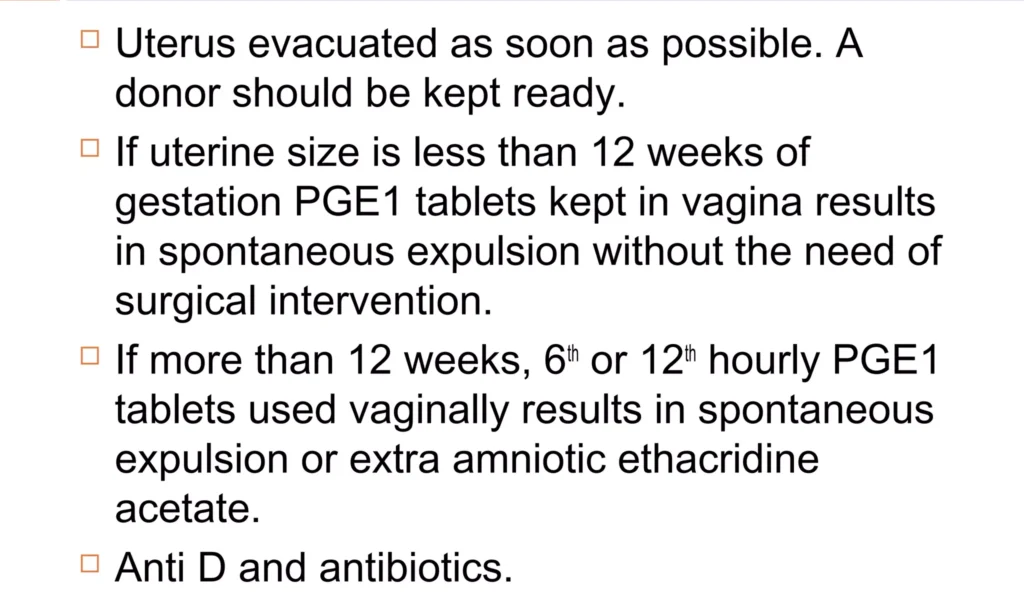Table of Contents
ToggleSEPTIC ABORTION
Septic abortion is characterized by micro-organisms invading the retained products of conception in the uterus.
It commonly arises as a complication of induced or incomplete abortion.

Causative Organisms of Septic Abortion
- Escherichia coli.
- Non-hemolytic streptococci.
- Staphylococcus aureus.
- Streptococcus pyogenes.
- Streptococcus pneumoniae.
Clinical Features of Septic Abortion
- History of amenorrhea and incomplete abortion.
- Pyrexia (fever).
- Tender uterus on palpation.
- Rapid pulse.
- Patient’s awareness of interference with the pregnancy.
- Headache.
- General malaise.
- Severe lower abdominal pain.
- Profuse offensive brownish discharge from the vagina.
- Mental confusion and endotoxic shock.

Management of Septic Abortion
In the Maternity Center:
- Arrange transport to the hospital.
- While waiting for transport, keep the patient isolated.
- Examine the patient and record all particulars.
- Send the patient to the hospital with a written note.
In the Hospital:
- Admit the mother to a gynaecological ward in isolation.
- Take a detailed history from the patient.
- Nurse the patient in a sitting-up position to aid drainage of liquor or pus from the uterus.
- Perform a general examination to rule out anaemia, shock, etc.
- Monitor vital observations.
- Inform the doctor.
- Conduct necessary investigations, e.g., blood for HB, grouping, and cross-match, high vaginal swab for culture and sensitivity.
- CBC indicates elevation of white blood cell count.
- Vaginal swab may be recommended to identify the causative bacteria
- Administer intravenous fluids for rehydration and electrolyte replacement.
- Conduct blood transfusion if the patient is anaemic.
- Provide a highly nutritious diet.
- Administer broad-spectrum antibiotics based on laboratory results.
- Avoid urine retention and oliguria indicating tubular necrosis.
- Perform evacuation after the course of antibiotics.
- Medical treatment includes injection penicillin, gentamycin, and hydrocortisone to counteract shock.
- Treatment should start with IV antibiotics and then switch to oral antibiotics. Amoxicillin 500mg 8 hourly for 7 days plus metronidazole 400mg 8 hourly for 7 days.
- Give IV fluids and tetanus toxoid.
Complications of Septic Abortion
- Septicemia: Septic abortion can lead to the development of septicemia, a condition characterized by the systemic spread of infection, resulting in high fever, rapid heart rate, and altered mental status.
- Renal Failure: In severe cases of septic abortion, the systemic infection can lead to acute renal failure, a condition marked by the loss of kidney function, resulting in decreased urine output, fluid retention, and electrolyte imbalances.
- Uterine Perforation: Instrumentation or medical procedures associated with septic abortion can lead to uterine perforation, a serious complication that may result in internal bleeding, infection.
- Pelvic Thrombophlebitis: Septic abortion can increase the risk of developing pelvic thrombophlebitis, a condition characterized by the formation of blood clots in the pelvic veins, leading to pain, swelling, and the risk of pulmonary embolism.
- Anaemia: Prolonged or heavy bleeding associated with septic abortion can lead to anaemia, a condition marked by a low red blood cell count, resulting in fatigue, weakness, and shortness of breath.
- Disseminated Intravascular Coagulation (DIC): In severe cases of septic abortion, the body’s response to infection can lead to disseminated intravascular coagulation, a condition characterized by abnormal blood clotting and bleeding.

MISSED ABORTION
Missed abortion occurs when the embryo dies or fails to develop, and the products of conception are retained in the uterus for weeks or months.
Missed abortion also refers to fetal death without expulsion of products of conception.
Death of the embryo usually occurs before 8 weeks gestation.
Cessation of symptoms of pregnancy usually prompts the mother to seek medical attention from a health facility. Symptoms include vaginal bleeding, abdominal pain, brown vaginal discharge and the cervix is usually closed.
Clinical Features of Missed Abortion
- History of amenorrhea.
- Symptoms of threatened abortion occur and cease.
- Absence of usual signs of pregnancy progress.
- Reduction in breast size.
- Fundus loss for dates due to fetal non-growth.
- Complete separation of products of conception from uterine walls without expulsion.
- Uterus ceases to enlarge, and the cervix remains tightly closed.
- After several weeks, brown discharge precedes bleeding, lower abdominal pain, and expulsion of a reddish-brown mass.

Management of Missed Abortion
In the Maternity Center:
- Prepare transport to the hospital.
- While waiting, obtain the patient’s history and conduct an examination.
- Send the patient to the hospital with a written note.
In the Hospital:
- Admit the patient to a gynaecological ward.
- If spontaneous abortion doesn’t occur, intravenous infusion of prostaglandins or oxytocin may be given.
- If the mole is not expelled, surgical emptying of the uterus using a suction curette is performed after cervix dilation.
- Administer analgesics for pain relief.
- Monitor vital observations: temperature, pulse, respiration, and blood pressure.

